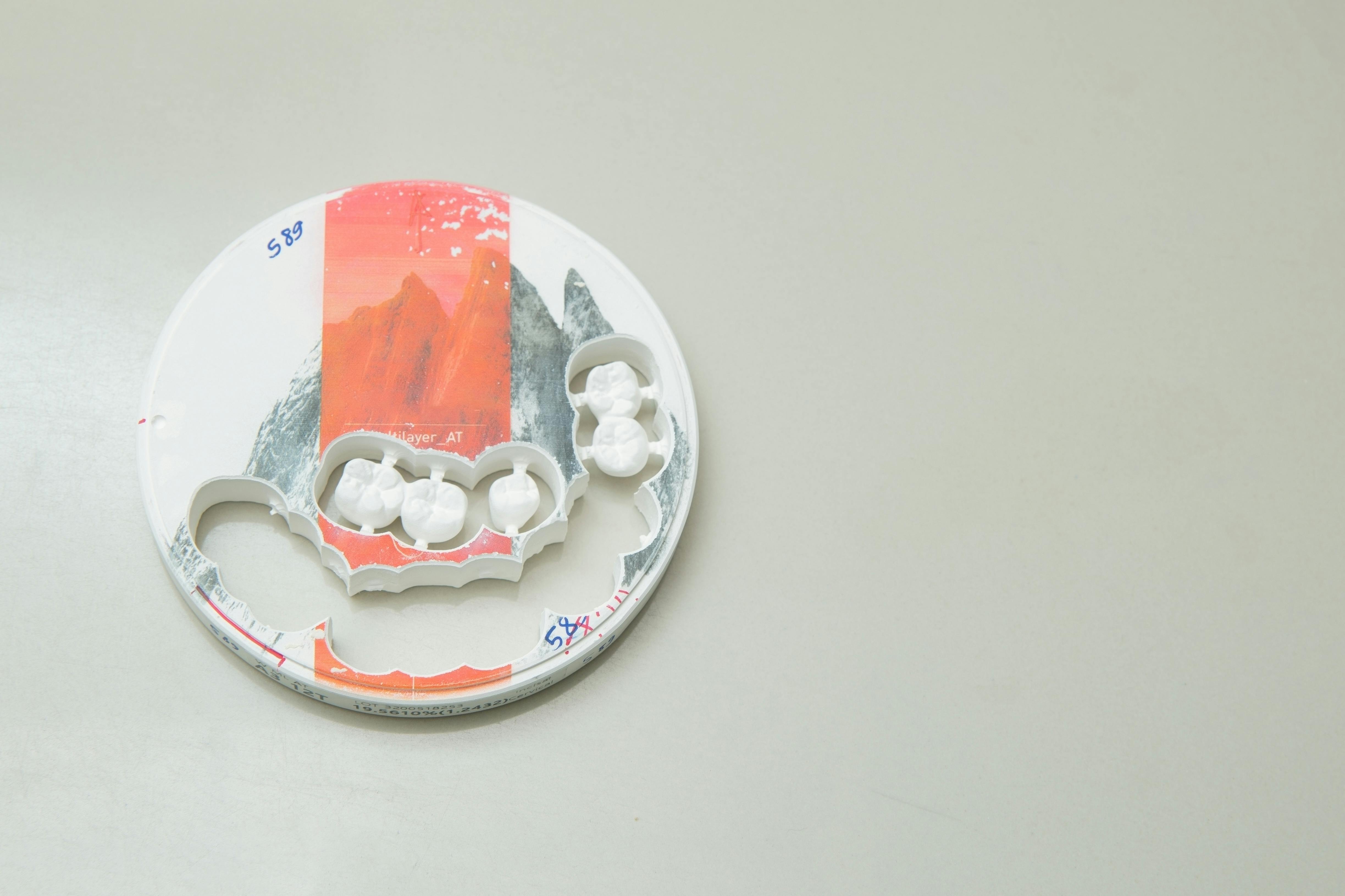Having a gap in your front teeth can be a source of embarrassment and can also make you feel self-conscious about your smile. Thankfully, there are several options available to help you close the gap and improve the appearance of your smile. In this article, we’ll discuss some of the ways you can fix a gap in your front teeth. We’ll look at the different treatments available, as well as what you need to consider before making a decision. Finally, we’ll provide some tips on how to maintain your new smile once you’ve had treatment.The best way to fix a gap in front teeth is to get braces. Braces can be used to adjust the alignment of your teeth and close the gap between them. In addition, you may also want to consider getting veneers or bonding, which are both cosmetic procedures that can be used to fill in gaps in teeth. Talk with your dentist about what would be the best option for you.
Types of Treatments for Gap in Front Teeth
Gaps in front teeth can be embarrassing and can create self-confidence issues. Fortunately, there are a number of treatments available to close the gap between your front teeth. The type of treatment you receive will depend on your individual case.
The most common treatments involve orthodontic braces or porcelain veneers. Orthodontic braces work by applying gentle pressure to the teeth over time, slowly bringing them together until the gap is closed. They are typically made of metal wires and brackets, but ceramic and clear braces are also available. Depending on the severity of the gap, treatment may take anywhere from a few months to a year or more.
Porcelain veneers are thin shells that cover the surface of your teeth and can be used to close gaps between them. Veneers provide an immediate cosmetic improvement and can last for many years with proper care. However, they do require removal of some enamel from the natural tooth in order to fit properly.
Another option is dental bonding, which involves applying a composite material directly to the surface of your teeth in order to fill in any gaps between them. Bonding is quick and relatively inexpensive compared to other methods, but it does not last as long as veneers and may require touch-ups over time.
Finally, dental implants are an option for those with larger gaps between their front teeth or who are missing one or more teeth altogether. Implants involve placing a metal post into the jawbone with a false tooth attached on top. This procedure requires surgery and may not be suitable for everyone depending on their overall health and oral condition.
No matter what type of treatment you choose for closing the gap between your front teeth, it’s important that you consult with a qualified dentist first in order to determine which option is best suited for your individual case.
Pros of Orthodontic Braces for Gap in Front Teeth
Having a gap in the front teeth can be an embarrassing and uncomfortable issue to have. Orthodontic braces are a great way to close the gap and give you a confident, beautiful smile. Orthodontic braces are designed to move your teeth into the correct position, giving you a straighter, more even smile. The main advantage of orthodontic braces is that they can quickly and efficiently close the gap in your front teeth. Orthodontic braces are also effective in treating other dental issues such as crooked or misaligned teeth, overbites, underbites, and crossbites. By correcting these issues, orthodontic braces can help improve your overall oral health.
Cons of Orthodontic Braces for Gap in Front Teeth
Although orthodontic braces can be beneficial for closing a gap in the front teeth, there are some drawbacks associated with them. One major drawback is that orthodontic treatment can take anywhere from 18 months to three years to complete. During this time, you will need to wear metal brackets and wires on your teeth which can be uncomfortable and cause irritation in some people. Additionally, wearing orthodontic braces may require frequent visits to the dentist for adjustments which can be time consuming and expensive. Furthermore, if not cared for properly, orthodontic braces can lead to cavities or gum disease due to the accumulation of food particles around the brackets and wires.
Pros of Veneers for Gap in Front Teeth
Veneers are a popular choice for closing gaps between front teeth because they can create a natural, aesthetic result. They are thin shells that are custom-made out of porcelain or composite resin and bonded to the front of the teeth. Veneers can be used to correct misalignment, discoloration, chipped teeth, and gaps between front teeth. They provide a more permanent solution than other solutions such as braces or dental bonding and are less invasive than more aggressive treatments such as crowns. Additionally, veneers require very little maintenance and can last up to 15 years with proper care.
Cons of Veneers for Gap in Front Teeth
Veneers are a more expensive option than other solutions such as braces or dental bonding. Additionally, they require some preparation of the existing tooth structure before placement and this can cause some discomfort for patients. Veneers also require professional care which means that they need to be checked regularly by a dentist to ensure that they remain healthy and looking good. Finally, if the veneer chips or breaks due to an accident or injury, it cannot be repaired and must be replaced completely.
Pros of Dental Bonding for Gap in Front Teeth
Dental bonding is a cosmetic procedure used to close the gaps between front teeth. It is a relatively inexpensive option compared to other treatments such as veneers or implants. Bonding can usually be done in one visit, and the results are immediate. The process involves applying a tooth-colored composite resin to the teeth, which is hardened with a laser or UV light. The resin bonds to the tooth, filling in the gap and creating a seamless look. Another benefit of dental bonding is that it can be used to change the shape and size of your teeth, making them look more symmetrical and even. Additionally, it can also be used to repair cracked or chipped teeth, and even cover up discolorations.
Cons of Dental Bonding for Gap in Front Teeth
One disadvantage of dental bonding for gap in front teeth is that it does not last as long as other treatments such as veneers or implants. The composite resin used in bonding can wear down over time and may need to be replaced every few years. Additionally, it may not be possible to match the exact color of your natural teeth with the composite resin. Finally, dental bonding is not suitable for all types of gap between front teeth; if there is too much space between them, then another treatment may be necessary.

Pros of Dental Implants for Gap in Front Teeth
Dental implants are a great option for filling gaps in front teeth. They are a permanent solution that looks natural and can last for many years, sometimes even a lifetime. The main benefit of dental implants is their durability; they are made of strong material that can withstand the everyday wear and tear of life. Additionally, they feel and look like natural teeth, so you won’t have to worry about people noticing your gap when you smile or talk. Furthermore, dental implants help with jawbone health because they stimulate the jawbone and prevent it from deteriorating due to lack of use.
Cons of Dental Implants for Gap in Front Teeth
The main disadvantage of dental implants is the cost; they can be quite expensive when compared to other options such as dentures or bridges. Additionally, the placement process can be lengthy; it usually takes several dentist appointments over several months before the implant is fully placed and ready to use. Lastly, there is a risk of infection with any dental procedure, so you should always make sure you follow the instructions from your dentist and practice good oral hygiene habits to reduce the risk.
Pros of Tooth Colored Fillings for Gap in Front Teeth
Fillings that are tooth-colored offer aesthetic benefits that metal fillings simply cannot provide. This is because the material used to make them, composite resin, is available in various shades that can be matched to the natural color of your teeth. This means that when you smile, no one will be able to tell that you have a dental filling in your mouth. In addition, tooth-colored fillings can also help strengthen the remaining portion of the tooth while also preserving its natural shape and size.
Cons of Tooth Colored Fillings for Gap in Front Teeth
The main disadvantage of tooth-colored fillings is that they tend to be slightly more expensive than metal fillings. Additionally, they may not be suitable for larger cavities as they are not as strong or durable as metal fillings. Furthermore, these types of fillings may require more than one visit to the dentist since they need to be placed and hardened carefully in order for them to last long and stay secure in the gap between your front teeth.
Choosing the Right Treatment for Gap in Front Teeth
If you have a gap in your front teeth, it can be an embarrassing and uncomfortable situation. Fortunately, there are several treatments available to help close the gap and give you a beautiful smile. But how do you know which treatment is best for you? The answer depends on the size of the gap, the type of teeth involved, and your overall goals. Here are some tips to help you choose the right treatment for your gap in front teeth.
The first step is to determine the size of the gap. If it is small (less than 1 mm), then a simple orthodontic treatment may be enough to close it. This could involve wearing braces or using clear aligners to shift your teeth into their correct positions. If the gap is larger (more than 1 mm), then more extensive treatment may be necessary, such as veneers or bonding.
The next step is to consider the type of teeth involved in closing the gap. If only two front teeth are involved, then braces or clear aligners may be sufficient. However, if all four front teeth are involved, then more extensive treatments such as veneers or bonding may be necessary. Additionally, if there is an underlying dental condition that needs to be addressed before attempting to close the gap (such as crooked or misaligned teeth), this should also be taken into consideration when choosing a treatment option.
Finally, it’s important to consider your overall goals when deciding which treatment option is best for you. Are you looking for a quick fix that can be done in one visit? Or do you want something longer lasting that will require multiple visits? Knowing what you want out of your treatment will help guide your decision-making process and ensure that you get the results that you desire.
By considering these factors carefully, you can make an informed decision about which treatment option is best for closing your gap in front teeth and achieving a beautiful smile.

Conclusion
In conclusion, there are various solutions to fixing a gap in front teeth. Depending on the severity of the gap, you may want to consider braces, veneers, or bonding. Your dentist can help you determine which option is best for your situation. If the gap is not causing any problems, then it may not be necessary to take any action. Whatever decision you make, it is important to talk to your dentist first and get their professional opinion.
Overall, having a gap in front teeth can be embarrassing and uncomfortable but there are solutions available that can help fix your smile. With the right treatment and care from a professional dentist, you should be able to restore your confidence in no time.
